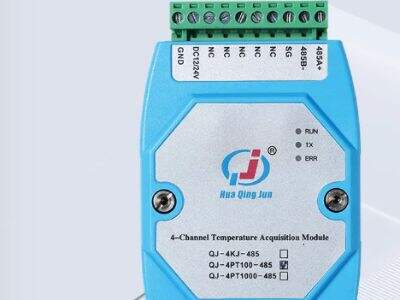Hello young readers! We are going to explore a little deeper in the wonderful lands of people talking to machines all across the history, today. The term for this special interaction is human-machine interaction (HMI), and it has evolved quite a bit in the last several decades. Qingjun is eager to lead you in an interesting journey over the past, present and future of our mechanical tools that we utilize within one daily life.

The Long History Of Human-Machine Interaction
First, on a mini history! How we first interacted with machines was very simplistically done. Think of it as controlling fire! For centuries humans have utilised various machines, although the number of machines that were used in daily life gradually increased until around 1800. These early aids to labor were then the combining of manually-intensive jobs.
Machines really took off during a time they call the Industrial Revolution. To control these machines like 7 Inch HMI Ethernet RS485 232 422 Communication DC10-30V Touch Screen for CNC machine, Guttenberg and others needed new ways to communicate with the machines when their human-on-human (verbal) communication was temporarily out of commission. And so we saw the invention of the first keyboards. Keyboards — This was the most important because this is how you could type things much faster and simpler into machines.
Next-Gen Machine/Human·The Future of Human/Machine Interface
It even began to get more exciting and fun as the world continued to evolve in a digital paradigm shift where communication with machines like HMI-Human Machine Interface becomes a need. Welcome to the 1960s and A MOUSE IS INVENTED! This tool indeed made computer usage a lot more convenient and people friendly. By the 1980s, a visual form of human-computer interaction had been developed, but it was in the 1980s that how humans and computers would communicate began to change. These were created for that very reason, to make it easier and more enjoyable for everyone to use computers. Keyboards started to become the principal way we type and entered data into machines, bringing them into homes and offices everywhere.
Past, Present, and Future
Let's then switch our focus to the now! We have a whole bunch of new, interesting ways to engage with our machines like 8 Channel Omron Relay Module 1NO 1NC 24V 10A G2R-1 Electromagnetic Relays for PLC today. We interact with touchscreens on our phone and tablets, we talk to voice assistants like Siri or Alexa, and if we are lucky, virtual reality! This is a spontaneous explosion of new technology in the field of cognitive science, all working towards more intuitive and natural human-machine communication. It’s like magic!
And, thankfully, human-machine interaction is going to get even more awesome as we look out forward. There will be more ways to use gestures, such as waving our hands to control gadgets, to even brain-computer interfaces. Hope you are able to run your fans using your brain, thanks to this also amazing technology. Can you imagine that? It is seriously akin to a sci-fi film!
This was back in the September of 2018 when I was first exploring the space of keyboard to gesture-based inputs!
Keyboards have been the primary interface for us to interact with our machines for many, many years. However, lately we can see a big tendency towards gesture-based controls. In short we can shape machines with our hands not only by typing. albeit less efficiently: videogames in which you control the player using hand movements, and even some phones that respond to gestures.
More voices assistants are also joining in! They let you manage a smart home by speaking. You can command your voice assistant to turn on the lights or play your favorite song, and it will be done! When used in the correct context we will disagree less, and have more, fantastic technology that has yet to arrive – brain- computer interfaces for one that will make machines mind controlled machines. It’s like having superpowers!
The Developments Impacting Our Everyday Lives
The way we live our everyday lives has shifted with all these new forms of interaction with machines. Think about it! Food to our homes, clothing by mail, communication over distances. We can control of our homes, cars by just talking to them. Isn’t that incredible?
Looking forward, the future holds even more exciting developments. We will accomplish what we never thought possible, like controlling equipments with our brain signals and eventually talking to them in the ways that feel most natural to us.
To conclude, the human-machine interfaces have had a long journey from the inception of the first keyboards. The future is a one of continual invention, I see a bright and very exciting future ahead for Qingjun. We hope you enjoyed reading through how humans has been communicating to machines in the history that is altering our lives everyday!

 EN
EN
 AR
AR BG
BG HR
HR CS
CS DA
DA NL
NL FI
FI FR
FR DE
DE HI
HI IT
IT JA
JA KO
KO NO
NO PL
PL PT
PT RO
RO RU
RU ES
ES SV
SV TL
TL ID
ID SR
SR SK
SK SL
SL UK
UK VI
VI SQ
SQ ET
ET GL
GL HU
HU TH
TH TR
TR GA
GA MK
MK HY
HY KA
KA BS
BS MN
MN